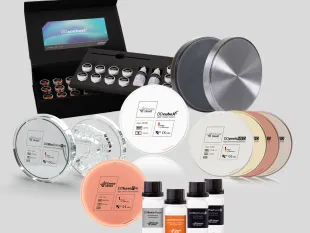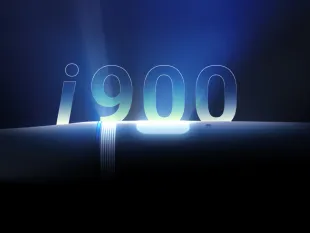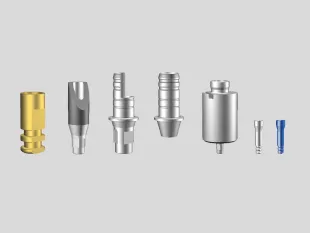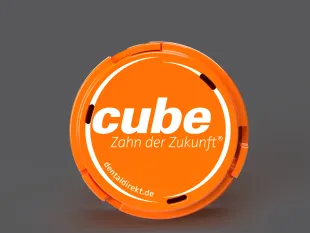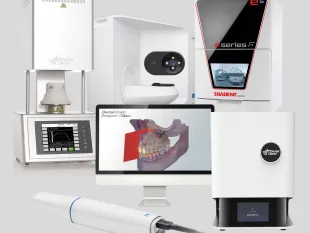The new high translucent ZrO₂ generations can hold their own against lithium disilicate ceramics in terms of aesthetics (see DD journal online: The 'X' in the dental industry - DD cubeX²® or 'e.max®'? https://www.dentaldirekt.de/en/dd-journal/dasxinderdentalbranche). In addition, the excellent mechanical properties enable fully anatomical solutions from the individual anterior tooth to the long-span bridge.
Monolithic zirconium oxide has solved the chipping problem of veneering ceramics. Moreover, the reduced space requirement compared to veneered restorations and the associated reduction in preparation depth is a significant factor from a clinical point of view. This is because conventionally cemented, all-ceramic crowns and bridges now can be fabricated in this way, which in the past was only possible with the help of metallic all-cast restorations.
Thus, it is not the hardness but the surface quality of the ceramic that is decisive for the abrasion at the antagonist. The rougher the occlusal contact surface of the ceramic restoration, the greater the resulting abrasion on the natural tooth enamel.
Obviously, glazed zirconium oxide also causes greater wear on the antagonist than polished zirconium oxide. It has been proven that conventional glaze is quickly eroded by masticatory loads (Fig. 2) and thus an 'emery paper effect' harmful to the antagonist can occur.
Over a period of three years, the CR Foundation (Provo, Utah USA) observed and documented in detail the superficial changes of a glazed crown in situ using a special procedure and REM (reflection electron microscopy). The study was able to show that regular masticatory loading over time leads to very fine fractures in the brittle glaze layer. In the process, fragments of the glaze are increasingly removed; with the result that shardlike particles of the glaze mass remain on the surface of the restoration, which - comparable to the emery paper effect - can continuously cause increasing abrasion on the natural antagonist.
How critical is the study situation to be assessed?
The material-related abrasion is a non-physiological mechanical wear of the teeth. It leads to an increased loss of hard tooth substance and is intensified by faulty contacts and dysfunctions (e.g. bruxism). Serious consequences such as cracks in the enamel, wedge-shaped defects in the neck of the tooth and grinding facets on front and side teeth can occur.
A general prerequisite for the clinical success of fully monolithic restorations is of course a functional design and an occlusal fit. But the finish of the restorations is also of great importance, as the study situation shows.
Veneering ceramics usually cause comparatively high antagonist wear. The crystalline structures of these masses exhibit a high degree of hardness, fragments of the veneer act as abrasive grinding tools over time.
Glazed surfaces, however, usually show less antagonist wear in studies than the 'gold veneering standard' - i.e.: glazes usually produce a less abrasive paper effect than full veneers.
Polished occlusal surfaces, on the other hand, cause significantly less abrasion, sometimes even less than the natural tooth itself. Therefore, polishing is a good clinical recommendation for minimal abrasion. Indeed, due to the 'mother-of-pearl effect', polished restorations are not considered to be highly aesthetic solutions.
In the search for an optimum finish that is not only 'antagonist friendly' but also aesthetic, it is worth taking a closer look at the behaviour and potential of the glaze materials.
Are there differences in glazes that are relevant to wear?
DD contrast® is an innovative color, texture and glaze paste system that gives full monolithic restorations an optimum color dynamics, excellent vivid depth effect and different intensities of fluorescence.
In addition to the aesthetic aspects, the fundamental basis of the pastes was the focus of the development of the DD contrast® system. On the one hand, the composition should ensure optimum handling and, on the other hand, minimise antagonist wear.
Special granulation processes of the glass raw materials made it possible to achieve extremely low application thicknesses (Fig. 3).
Fig. 3: By using the three DD contrast® components, a plastic depth illusion can be achieved with a minimum application of <0.2 mm.
Fig. 4: The results of the pin on block test show the wear on the steatite ball and thus provide reliable expected values for wear on natural tooth enamel.
Titelbild: © Anton Sawizki, Master dental technician, Essen. Use of DD cubeX²® posterior tooth crown
Names marked with ® are trademarks and/or brand names of the manufacturers
